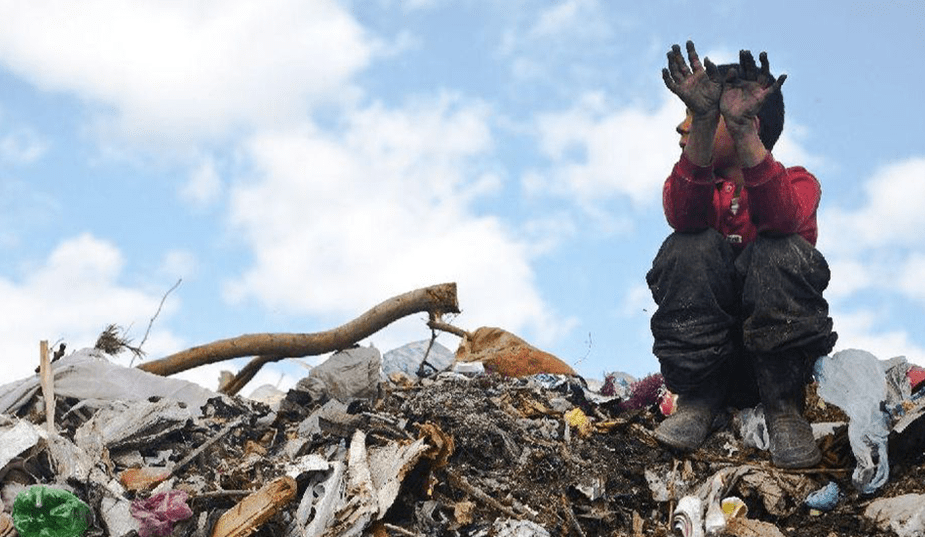Located in settlements that are cut off from running water, sanitation and access to health care services, the Roma communities are particularly vulnerable to COVID 19. It is in everyone`s interest to help them, according to BIRN’s research paper on the Roma population, published on the occasion of International Roma Day – 8th April but also because of the current coronavirus pandemic, which has already claimed more than 82,000 lives, affecting nearly one million and a half people worldwide.
In a separate report from the European Environmental Bureau (EEB), it is stated that European Roma communities often live on polluted wastelands and lack running water or sanitation in their homes as a result of “environmental racism”.Countries across Europe have made blockades trying to stop the spread of COVID-19 by restricting movement, closing schools and businesses and applying social distance.
But not all people live in conditions that allow them to follow such rules.
For hundreds of thousands of Roma in Central and Southeastern Europe, this is almost impossible, according to four authors of the BIRN`s analysis.From the Czech Republic, Hungary and Slovakia, to Bulgaria, Romania, Kosovo and Serbia, Roma are often restricted to moving in crowded settlements with limited access to infrastructure, including clean water, sanitation and sewage.
Their problems have been neglected in recent decades by the governments of these countries, as the authorities have neglected to legalize Roma settlements and provide basic services there. The coronavirus is now threatening with dire consequences for the residents of these settlements and society as a whole.
The economic impact for vulnerable Roma will also be catastrophic. Targeted assistance for Roma communities has never been more urgent, it has been reported.
The most obvious problem is the inability to socially distance themselves when so many Roma families live in tiny apartments, with many people crammed into one or two rooms. There are streets outside that are also crowded, with little or no open space.
Another major obstacle is the inability to learn from home, as is practiced in most of the world these days.
However, many Roma families do not have internet, computers nor electricity. Meanwhile, local centers for the education of vulnerable families are closed.Primary school pupils in countries such as Northern Macedonia and Serbia may benefit from more accessible television lectures. But even with TVs and electricity, such distance learning is difficult in a busy apartment consisting of one bedroom or barracks.
At the same time, Roma parents who are illiterate themselves cannot help their children learn from home. We may expect many Roma children to lose their entire school year or drop out of education altogether. Education is one of the most critical points when it comes to the Roma population, everywhere.
Many Roma, even those with some small private businesses, are not officially registered, which excludes them from the possible support provided by governments for SMEs. Social care in most of the countries in Western Balkan is of limited capacity.
It should also be remembered that many Roma families have neither the money nor the storage space for food and cleaning products. Even if they could, how can parents explain to hungry children that food from home is not meant for today, but rather for the next week?
All the relevant information shows the urgency of helping Roma communities – and not just for the sake of helping the Roma.
This is a virus that does not discriminate. If the poor Roma settlements get affected, the consequences will not apply to the people living in them. Authorities should prepare for the long-term implications of this. BIRN researchers indicate that a plan should be specifically created to prevent Roma from becoming “scapegoats” if the infection rate breaks the ceiling in places with large Roma communities.
Whether motivated by rumors or just plain racism, attacks on Roma have taken place throughout the Western Balkans and beyond. It must be remembered that the decades of collective neglect in all societies have made their position worse than that of any other community.
Life near or at landfills or industrial waste – environmental racism
Thanks to this neglect, they have for the most part lived and survived for decades in areas susceptible to infestation, near or at landfills of industrial and other waste. This is precisely what the European Environmental Bureau has said in a statement when they openly called it “environmental racism”.
The EEB, a Pan-European network of green NGOs, has concluded that Roma communities are often excluded from basic services such as running water, sanitation and garbage collection, while often living in or near some of Europe’s dirtiest places, such as are garbage dumps or contaminated industrial lands.
About 10 million Roma live in Europe, including 6 million in the European Union. While their social exclusion is fairly well documented, EEB researchers have stated that denial of basic services and their exposure to pollution has been neglected.
This network of green NGOs, in collaboration with researchers in Central and Eastern Europe, identified 32 cases of “environmental racism” in five European countries: Hungary, Bulgaria, Romania, Slovakia and Northern Macedonia. The researchers also referred to the existing working and living conditions of Roma in Bosnia and Herzegovina, Serbia, Montenegro and Kosovo.
Lack of water supply, sanitation and garbage collection, were present problems in more than half of the cases considered, such as in Stolipinovo in Bulgaria, the largest Roma settlement in Europe and part of Plovdiv town. An estimated 60,000 people live in the district, but many of them are cut off from plumbing and sanitation from the rest of Plovdiv – the European Capital of Culture in 2019.
In Hungary, access to public water supply has been cut off for some Roma communities during the summer heat – a decision that affected 800 people in Gulac and 1,500 residents of Husartelep in August 2017. The northern Hungarian city of Ozd received nearly 5.5 m euros from Switzerland to improve the provision of running water for Roma communities, but researchers say that many have not benefited from the scheme. Authorities, on the other hand, claimed that Roma households did not pay the bills.
Previous research has found that only about 12 percent of Roma communities have functional toilets with sanitary facilities and wet facilities.
One vivid example of the bad conditions in which Roma can be found living is Pata-Rat, on the outskirts of Cluj-Napoca in northwestern Romania, known for its Gothic architecture and Baroque palaces.At Pata-Rat, about 2,000 Roma live near or at the landfill.
“It’s frightening,” said Roma rights activist Ciprian Nodis, who has visited the site several times.”It’s similar to what you see in the favelas of Rio de Janeiro. People live in extreme poverty with no access to utilities, no access to electricity, water. They live in improvised shelters made of recyclable material that they usually find in the landfill itself – cardboard or rotting wood or things like that. Most of them work in a landfill. ”
He identified four separate Roma communities living in Pata-Rat: the first group came in the 1960s, with the most recent arrivals from 2013 when Roma residents of Cluj-Napoca were moved from the city center. The least fortunate community of four in total, lives in the landfill itself, where air, water and soil are deeply polluted.
“It’s a living hell, especially for children born there. It’s a bad luck to be born in Pata-Rat,” Nodis said.
But Pata-Rat is not even an exception.
Researchers have identified even more Roma communities living next to the landfill site of the Faculty, near Sofia. On the outskirts of a city in Transylvania-Turde, Roma families live in a former industrial place contaminated with mercury. Of course, it is not surprising then that 32 case studies found that Roma were susceptible to respiratory and infectious diseases, incidents and depression.
Meanwhile, Roma communities that do not live in degraded land, risk their eviction, and are without legal protection. About 100 Roma living in Constanta, Romania were forced to relocate to allow the construction of a resort.
Patrizia Heidegger, co-author of the report and director of global policy and sustainability at the EEB, said the 32 Roma cases listed are just the tip of the iceberg.
The denial of basic services has persisted, despite the fact that Roma communities have lived in the same villages and towns for many years. The lack of water or sanitation is not because “they have not lived in one place for a long time. Indeed, it is a complete neglect of the area with the Roma population. “
The problem is more complicated because Roma communities themselves are often accused of polluting and degrading land, she said.
“They are perceived as an environmental problem and not as a community disproportionately affected by exposure to pollution or the failure to provide environmental services, which then degrades their environment,” Heidegger says.
Roma communities face enormous prejudice, said one of the authors of the report, stating that “prevailing attitudes such as ‘they don’t care about the clean environment, they don’t care where they live, they work in landfills and they live there..’ They are racist prejudices,” she concluded.
The European Environmental Bureau is now calling on the authorities and EU Member States to step up their efforts to protect health, while urging them to recognize the scale of the problem.
“We must admit that environmental racism exists in Europe. It’s the first step, “said Patrizia Heidegger, as reported by The Guardian.
Biljana Jovićević
This is part of project Civil society in action promoting and protecting Roma and Egyptian rights in Montenegro. The project is funded by EU and implement Help with the Roma youth organization Walk with us Phiren Amenca.



